Multiple Choice
Identify the
choice that best completes the statement or answers the question.
|
|
|
Use the Fundamental Counting Principle to find the total number of possible
outcomes.
|
|
|
1.
|
MP3
Player | | Memory | 1 GB, 2 GB, 4 GB , 8 GB, 16 GB, 32 GB | | Color | Purple, Black, White
| | |
|
|
|
The bar graph shows the results of spinning the spinner 40 times. Find the
experimental probability of the event.
|
|
|
2.
|
Spinning a 3 or a 4 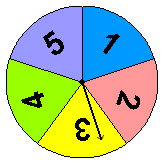 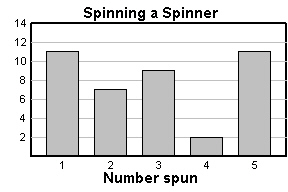
|
|
|
Use the spinner to determine the probability of the event.
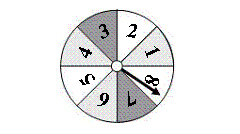
|
|
|
3.
|
Spinning an even prime
|
|
|
4.
|
Not spinning a multiple of 5
|
|
|
5.
|
Spinning a –3
a. |  | c. |  | b. | 0 | d. | 1 |
|
|
|
6.
|
Spinning a number less than 7
|
|
|
You roll a number cube. Determine the theoretical probability of the
event.
|
|
|
7.
|
Rolling a 3
|
|
|
8.
|
Rolling a multiple of 2
|
|
|
You randomly choose one of the chips. Without replacing the first chip, you
choose a second chip. Find the probability of choosing the first chip, then the second
chip.
|
|
|
9.
|
White and Red 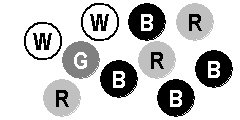
|
|
|
10.
|
White and not a Black 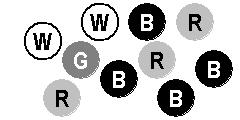
|
Other
|
|
|
1.
|
Extended Response The lunch menu at a weekend event requires
participants to pre-order from a set menu. The main choice is a hamburger with or without pickles or
a hot dog with or without relish. Each order has a choice of chips or applesauce as a side and water
or milk to drink. a. Draw a tree diagram to represent
the menu options.
b. What is the probability that a participant orders any meal
combination with water?
c. A company sends 4 participants. What is the probability
that all of these participants order this option?
d. If the participants were also
given a choice of a brownie or cookie for dessert, what is the probability that a cookie would be
chosen in the combination listed in part (b)?
|